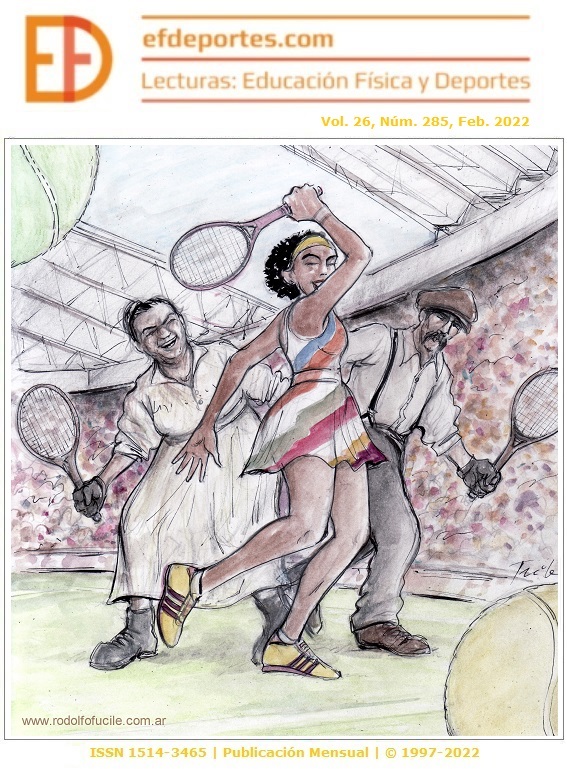Functional Independence Comparison in the Passive Military and Civilian Elderly
Abstract
Aging involves a series of morphological and physiological changes in the body, and its knowledge allows us to understand the pathophysiological differences between older adults and the rest of the adult population. To maintain functional independence it is essential to have adequate muscle mass. Strength and muscle mass reach their maximum expression between the second and fourth decades of life and since then there has been a progressive decline. The present study is a descriptive-correlational research, with a quantitative approach, which consisted of the comparative analysis of the aging of passive military personnel and civilians. The inclusion criteria in the military group of older adults were: being a passive military man who practiced physical activity frequently. On the other hand, in the comparative group of elderly civilians, the inclusion criterion was being sedentary. A total of 63 elderly people between 73 to 99 years old participated. The sample was divided into two groups: a group called active military physicists and a comparative group with sedentary civilian participants. In the research group, those who frequently performed physical activity show little dependence, on the contrary, the group of sedentary people present severe and moderate dependence.
References
Bermúdez, O.I. y Tucker, K.L. (2000). Uso de la altura de rodilla para corregir la talla de ancianos de origen hispano. Archivos Latinoamericanos de Nutrición, 50(1), 42-47. https://www.alanrevista.org/ediciones/2000/1/art-5/
Bruyère, O., Beaudart, C., Ethgen, O., Reginster, J.Y., y Locquet, M. (2019). The health economics burden of sarcopenia: a systematic review. Maturitas, 119, 61-69. https://doi.org/10.1016/j.maturitas.2018.11.003
De Groot, L.C., Beck, A.M., Schroll, M., y Van Staveren, W.A. (1998). Evaluating the DETERMINE Your Nutritional Health Checklist and the Mini Nutritional Assessment as tools to identify nutritional problems in elderly Europeans. European Journal of Clinical Nutrition, 52(12), 877-883. https://doi.org/10.1038/sj.ejcn.1600658
de la Torre Molina, Y., y Cabrera Velázquez, M. (2018). Desajustes intraarticulares en el paciente geriátrico. Gaceta Médica Espirituana, 20(2), 69-82. http://revgmespirituana.sld.cu/index.php/gme/article/view/1670
Dobbelsteyn, C.J., Joffres, M.R., MacLean, D.R., y Flowerdew, G. (2001). A comparative evaluation of waist circumference, waist-to-hip ratio and body mass index as indicators of cardiovascular risk factors. The Canadian Heart Health Surveys. International journal of obesity, 25(5), 652-661. https://doi.org/10.1038/sj.ijo.0801582
Henríquez‐Olguin, C., y Knudsen, J.R. (2019). Parkin the progression of sarcopenia. The Journal of physiology, 597(9), 2333. https://doi.org/10.1113/JP277770
Huan, T., Chen, G., Liu, C., Bhattacharya, A., Rong, J., Chen, B.H., y Levy, D. (2018). Age‐associated micro RNA expression in human peripheral blood is associated with all‐cause mortality and age‐related traits. Aging Cell, 17(1), e12687. https://doi.org/10.1111/acel.12687
Larsson, L., Degens, H., Li, M., Salviati, L., Lee, Y.I., Thompson, W., y Sandri, M. (2019). Sarcopenia: aging-related loss of muscle mass and function. Physiological reviews, 99(1), 427-511. https://doi.org/10.1152/physrev.00061.2017
Lee, S.Y., Tung, H.H., Liu, C.Y., y Chen, L.K. (2018). Physical activity and sarcopenia in the geriatric population: a systematic review. Journal of the American Medical Directors Association, 19(5), 378-383. https://doi.org/10.1016/j.jamda.2018.02.003
Meier, N.F., y Lee, D.C. (2020). Physical activity and sarcopenia in older adults. Aging clinical and experimental research, 32(9), 1675-1687. https://doi.org/10.1007/s40520-019-01371-8
Oliveira, D.V., Yamashita, F.C., Santos, R.M., Freire, G.L., Pivetta, N.R., y Nascimento Júnior, J.R. (2020). ¿A duração e frequência da prática de atividad física interferem no indicativo de sarcopenia em idosos? Fisioterapia e Pesquisa, 27(1), 71-77. https://doi.org/10.1590/1809-2950/19004527012020
Plaza, B.L., Candela, C.G., y López, L.M. (2019). Nutritional problematic related to frailty and sarcopenia in older. Nutricion hospitalaria, 36(3), 49-52. https://doi.org/10.20960/nh.02809
Salazar, M.M., y Morales, S. (2018). Influencia de la actividad física en la motricidad fina y gruesa del adulto mayor femenino. Revista Cubana de Investigaciones Biomédicas, 37(3), 1-14. http://www.revibiomedica.sld.cu/index.php/ibi/article/view/127/html
Copyright (c) 2022 Lecturas: Educación Física y Deportes

This work is licensed under a Creative Commons Attribution-NonCommercial-NoDerivatives 4.0 International License.








